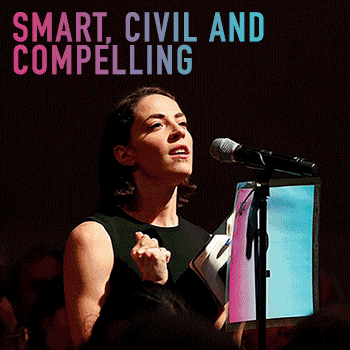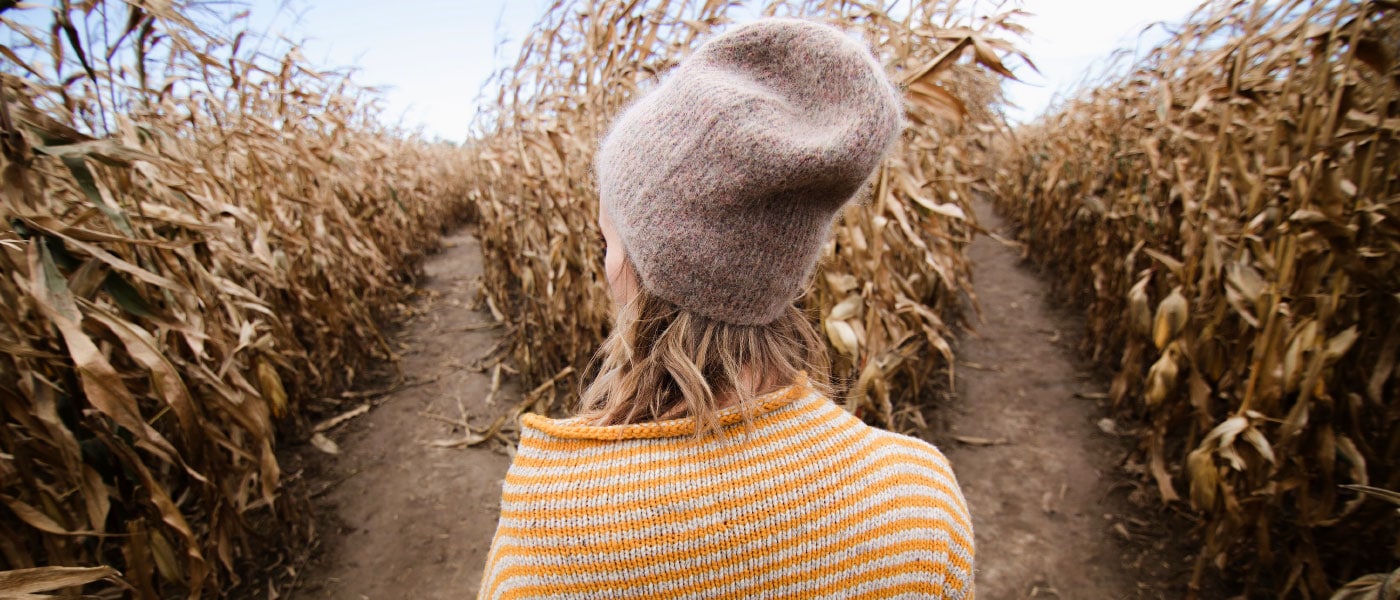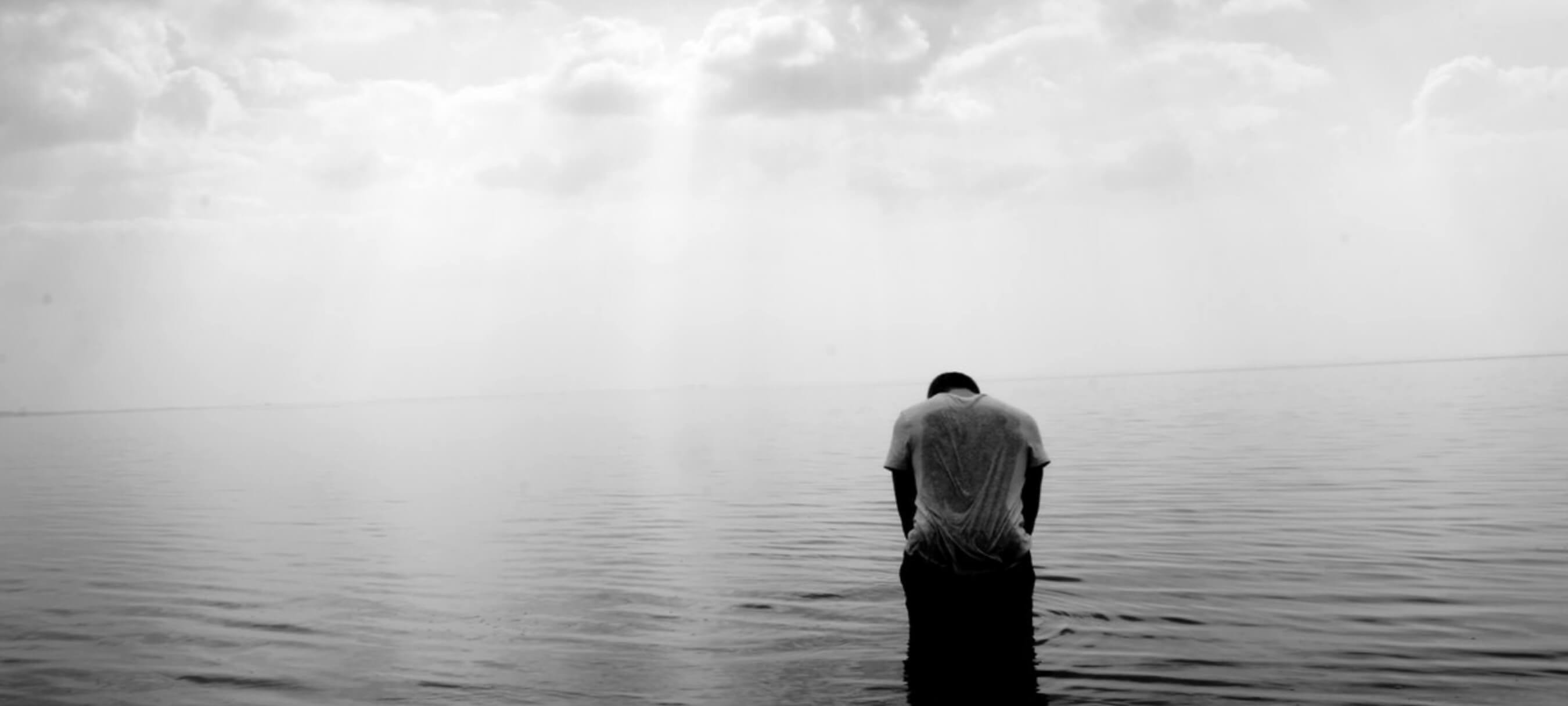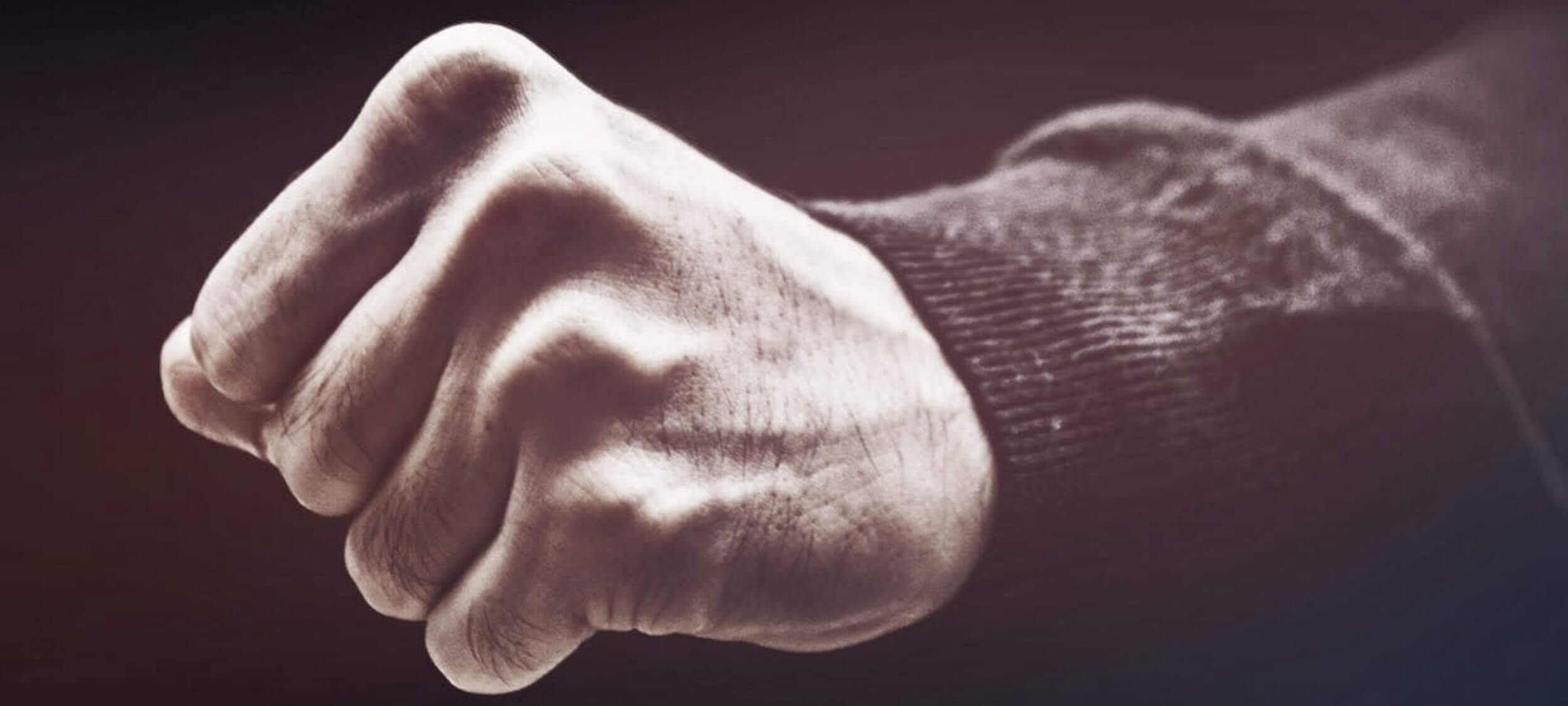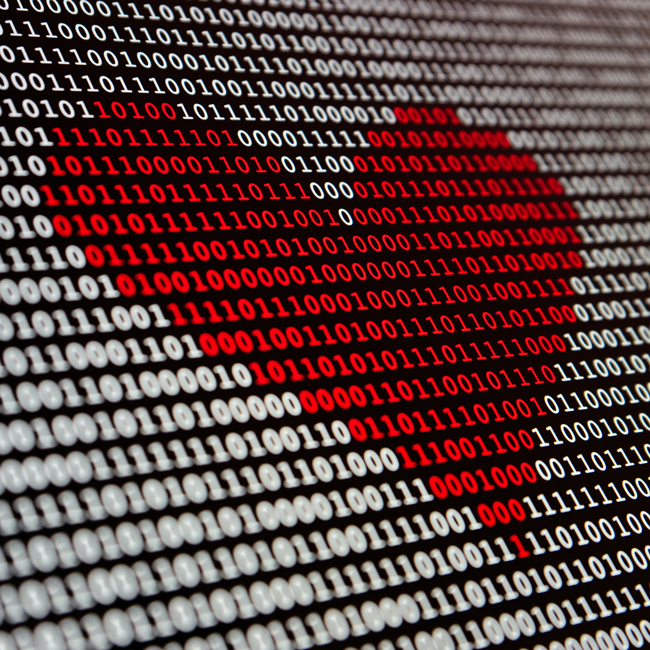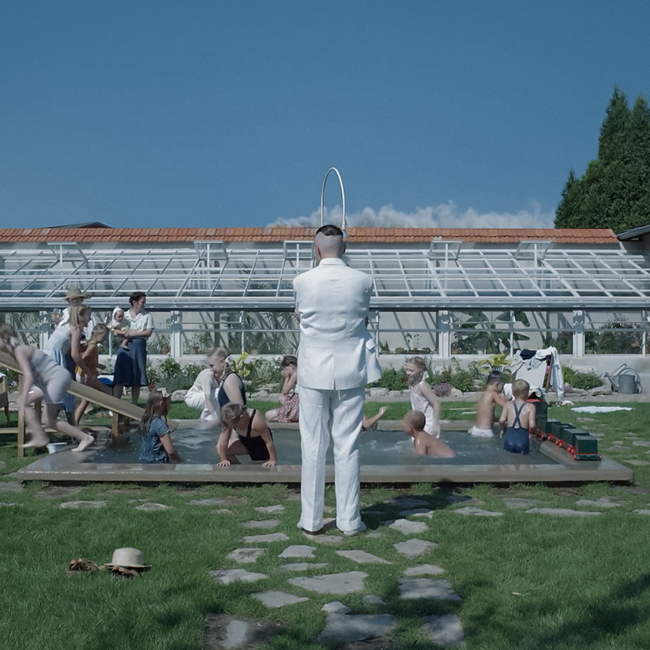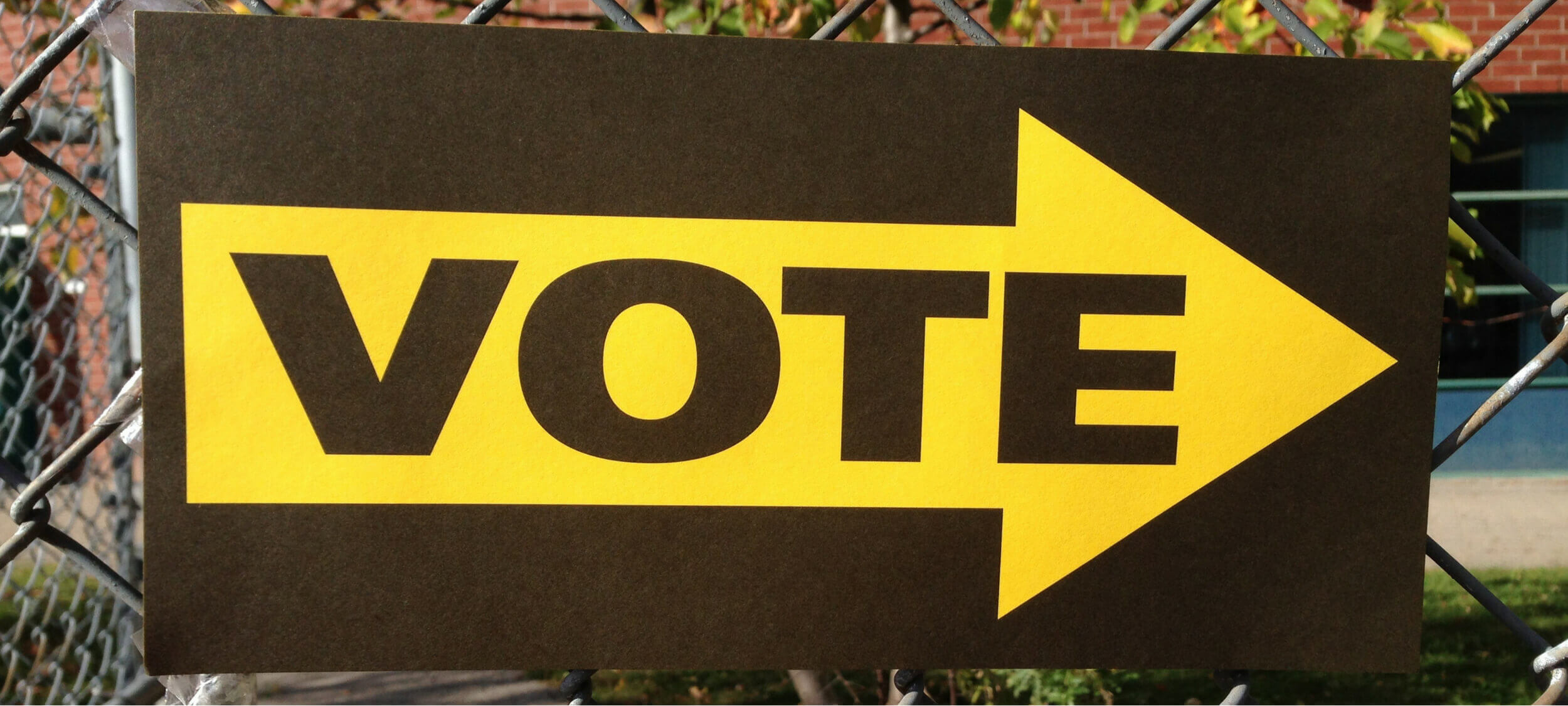Ethics Explainer: Ethics, morality & law

Ethics Explainer: Ethics, morality & law
ExplainerPolitics + Human Rights
BY The Ethics Centre 27 SEP 2016
Some people talk about their personal ethics, others talk about a set of morals, and everyone in a society is governed by the same set of laws. They can be easy to conflate.
Knowing the difference and relationship between them is important though, because they can conflict with one another. If the law conflicts with our personal values or a moral system, we have to act – but to do so we need to be able to tell the difference between them.
Ethics
Ethics is a branch of philosophy that aims to answer the basic question, “What should I do?” It’s a process of reflection in which people’s decisions are shaped by their values, principles, and purpose rather than unthinking habits, social conventions, or self-interest.
Our values, principles, and purpose are what give us a sense of what’s good, right, and meaningful in our lives. They serve as a reference point for all the possible courses of action we could choose. On this definition, an ethical decision is one made based on reflection about the things we think are important and that is consistent with those beliefs.
While each person is able to reflect and discover their own sense of what’s good, right, and meaningful, the course of human history has seen different groups unify around different sets of values, purposes and principles. Christians, consequentialists, Buddhists, Stoics and the rest all provide different answers to that question, “What should I do?” Each of these answers is a ‘morality’.
Morality
Many people find morality extremely useful. Not everyone has the time and training to reflect on the kind of life they want to live, considering all the different combinations of values, principles, and purposes. It’s helpful for them to have a coherent, consistent account that has been refined through history and can be applied in their day to day lives.
Many people also inherit their morality from their family, community or culture – it’s rare for somebody to ‘shop around’ for the morality that most closely fits their personal beliefs. Usually the process is unconscious. There’s a challenge here: if we inherit a ready-made answer to the question of how we should live, it’s possible to apply it to our lives without ever assessing whether the answer is satisfactory or not.
We might live our whole lives under a moral system which, if we’d had the chance to think about, we would have rejected in part or in full.
Law
The law is different. It’s not a morality in the strict sense of the word because, at least in democratic nations, it tries to create a private space where individuals can live according to their own ethical beliefs or morality. Instead, the law tries to create a basic, enforceable standard of behaviour necessary in order for a community to succeed and in which all people are treated equally.
Because of this, the law is narrower in focus than ethics or morality. There are some matters the law will be agnostic on but which ethics and morality have a lot to say. For example, the law will be useless to you if you’re trying to decide whether to tell your competitor their new client has a reputation for not paying their invoices, but our ideas about what’s good and right will still guide our judgement here.
There is a temptation to see the law and ethics as the same – so long as we’re fulfilling our legal obligations we can consider ourselves ‘ethical’. This is mistaken on two fronts. First, the law outlines a basic standard of behaviour necessary for our social institutions to keep functioning. For example, it protects basic consumer rights. However, in certain situations the right thing to in solving a dispute with a customer might require us to go beyond our legal obligations.
Secondly, there may be times when obeying the law would require us to act against our ethics or morality. A doctor might be obligated to perform a procedure they believe is unethical or a public servant might believe it’s their duty to leak classified information to the press. Some philosophers have argued that a person’s conscience is more binding on them than any law, which suggests to the letter of the law won’t be an adequate substitute for ethical reflection.
Ethics in your inbox.
Get the latest inspiration, intelligence, events & more.
By signing up you agree to our privacy policy
You might be interested in…
Opinion + Analysis
Climate + Environment, Politics + Human Rights
Australia, it’s time to curb immigration
Opinion + Analysis
Politics + Human Rights
Israel or Palestine: Do you have to pick a side?
Big thinker
Politics + Human Rights
Big Thinker: Peter Singer
Opinion + Analysis
Politics + Human Rights, Relationships
Would you kill baby Hitler?
BY The Ethics Centre
The Ethics Centre is a not-for-profit organisation developing innovative programs, services and experiences, designed to bring ethics to the centre of professional and personal life.
Send in the clowns: The ethics of comedy

Send in the clowns: The ethics of comedy
Opinion + AnalysisHealth + WellbeingRelationships
BY The Ethics Centre 21 SEP 2016
We’ve all heard jokes that were ‘too soon’ or went ‘too far’. Maybe you laughed hysterically or maybe you were offended. We asked a few comedians how they negotiate the thorny side of humour.
Avoid lazy stereotypes
“It’s easy to be lazy because so much comedy comes from stereotypes … but there is more interesting humour found by digging deeper”, says Suren Jayemanne. By focusing on the absurdity of the stereotype rather than the stereotype itself, you can laugh with the subject of the joke rather than at them.
Jayemanne uses the example of Indian taxi drivers. “The reason is because so many of their qualifications aren’t recognised, so the stereotype is one we’ve imposed on them as a society.” So instead of making fun of Indian cab drivers, he jokes about using them as a chance to get a cheap second medical opinion.
For Karen Edwards, the use of stereotypes really depends on the audience. As an Aboriginal comedian, she thinks stereotypes can be relatable. “I use [Aboriginal] stereotypes in front of our own mob and they find it relatable – if blackfellas won’t be offended by a joke then I’ll run with it.”
This means she still avoids the more offensive, lazy stereotypes, “like petrol sniffers – that’s offensive even if it’s said by an Aboriginal”.
Free speech doesn’t mean you should run your mouth
“Some people think free speech in comedy means they should be able to say anything that pops into their head on stage – that’s crazy to me,” says Tom Ballard.
“The big conversation in comedy right now seems to be about political correctness, the restrictions on free speech, how our jokes reflect on us as comedians and which jokes are worth saying”, he adds. “If we’re talking about stuff about which we have no experience … is our dumb joke worth it given the offence it might cause to people who have?”
The free speech defence can also be used as a cop-out, says Bish Marzook. “The people who are calling out the comedians also have the right to free speech – you have a right to say you didn’t find their joke funny.”
“If you have absolute free speech you’re probably restricting other essential rights as well,” adds Jayemanne.
Punch up, not down
Jayemanne explains how comedians have become mindful of not piling on to groups who are already struggling against social issues. “I think because you’ve got a pulpit to speak from, it’s important to be conscious of who the victim of your joke is.”
“You don’t want to be part of the problem,” says Ballard. Sometimes that means thinking carefully about whether your joke is consistent with the kind of society you want to create. Take Islam, for instance.
“I’m not a fan of religion, I’m an atheist – but I’m also a white man in a climate where apparently 49 percent of Australians support a ban on Muslim immigration… I don’t want to contribute to the victimisation and abuse of those people.”
Comedy takes topics most people would assume are taboo or tragic and turns it into something cathartic.
I ask whether avoiding punching down meant comedians needed to have a kind of ‘oppression hierarchy’ to know who sat below them on the pecking order. Marzook admits it can be hard.
“I identify as a person of colour and a woman, so I know there are things I can say but I also have a lot of privileges people don’t know about.”
“Just because you’re conscious of punching down doesn’t mean you can’t talk about disadvantage,” adds Ballard, whose last show Boundless Plains to Share focused on asylum-seeker politics. “I wanted to talk about refugees… but in terms of the ‘punch’, it was always about the people in power.”
Are some topics off-limits?
Edwards thinks some topics shouldn’t be the subject of comedy. “No matter how funny, there are certain things I’d never touch. I’m not going to make jokes about babies dying… like all the ‘dingo ate my baby’ jokes – why? It’s too tragic.”
For Marzook, it depends on the context – are you saying something funny and thoughtful?
“The reason I went into comedy is to make a point of what’s happening in the world… I would encourage people to tackle hard issues. If it’s racist or untrue then that’s the problem and someone should point it out.”
Ballard thinks the idea of off-limits topics is “a tired angle”.
“We know comedians like Amy Schumer, Jon Stewart and Chris Rock exist – it’s pretty settled that edgy comedy is possible,” he says.
Even so, at a certain point in his last show on asylum seekers, he couldn’t make jokes. “There were some things about the nature of the system that I simply couldn’t make funny and so the show became more earnest and theatrical. At a point I just had to say this is fucked up.”
“I think an ethical comedian is one who listens and takes seriously the possibility of offence.” – Tom Ballard
Jayemanne thinks comedy needs to tackle the hard stuff, and that people want comedians to do so. “Comedy takes topics most people would assume are taboo or tragic and turns it into something cathartic. If you shy away you’re sheltering people, but humour is such an important tool for helping people deal with difficult topics.”
“It helps make the medicine go down,” adds Ballard.
Listen to your audience and be forgiving
“Comedy is about truth and, to an extent, egalitarianism. It’s a social, communal thing,” says Ballard. “I think an ethical comedian is one who listens and takes seriously the possibility of offending – there are things to be learned from the audience.”
Marzook worries comedians will shy away from serious issues because the costs of getting it wrong can be so severe. “Now everyone is so scared of making a mistake, and they should be, but if the consequences weren’t so severe, like online shaming, losing your job… maybe people would be willing to admit they made a mistake and we could move on.
“I guess it’s just about doing your best.”
Ethics in your inbox.
Get the latest inspiration, intelligence, events & more.
By signing up you agree to our privacy policy
You might be interested in…
Explainer
Health + Wellbeing, Relationships
Ethics Explainer: Values
Opinion + Analysis
Politics + Human Rights, Relationships
Assisted dying: 5 things to think about
Opinion + Analysis
Business + Leadership, Health + Wellbeing
What your email signature says about you
Opinion + Analysis
Relationships
The ethics of friendships: Are our values reflected in the people we spend time with?
BY The Ethics Centre
The Ethics Centre is a not-for-profit organisation developing innovative programs, services and experiences, designed to bring ethics to the centre of professional and personal life.
Online grief and the digital dead

For many of us, social media is not just a way to communicate. It’s part of the fabric of everyday life and the primary way we stay up to date in the lives of some of our friends and family.
When people die, their profiles continue to present their ‘face’ as part of our social world.
Such continued presence makes a difference to the moral world we continue to inhabit as living people. It forces us to make a decision about how to deal with the digital dead. We have to treat them in some way – but how?
What should be done with these ‘digital remains’? Who gets to make that decision? What happens when survivors (those still alive who will be affected by these decisions) disagree?
“Death obliterates a person’s consciousness but we have some power to ensure it doesn’t destroy everything about them.”
So far, tech companies have worked out their norms of ‘digital disposal’ on the fly. On Facebook, for instance, some profiles are actively deleted, others are simply abandoned, while others have been put into a memorialised state which lets existing ‘friends’ post on the deceased’s timeline.
Facebook allows you to report a deceased person and memorialise their account – Want to decide what happens to your own account if you pass away? You can let Facebook know in advance what you’d like to happen in the event of your death.
Given the digital dead could soon outnumber the digital living, it might be time to look more closely at the problem. This will require asking some fundamental questions: what is the relationship between an online profile and its creator and how might that matter in ethical terms?
I’ve said social media is one of the ways our friends stay present in our lives and in our ‘moral worlds’. The dead have in fact always been part of our moral world: we keep promises to them, speak well of them and go out of our way to preserve their memory and legacy as best we can.
Jeffrey Blustein gives us one reason why we might be obliged to remember the dead this way: memory is one way to “rescue the dead from insignificance”. Death obliterates a person’s consciousness but we have some power to ensure it doesn’t destroy everything about them.
As Goethe said, we die twice. First, when our hearts stop beating. And second, when the last person who loves us dies and we disappear from memory.
This gives digital artefacts ethical significance. We can’t stop that first death, but we can take steps to delay the second through a kind of ‘memory prosthetic’. A memorialised social media profile seems like exactly this kind of prosthetic. It allows something of the real, tangible presence of the dead to persist in the world of the living and makes the task of preserving them easier.
This gives us at least one reason not to delete dead peoples’ profiles: their deletion removes something of the dead from the world, thereby making them harder to remember.
The right of a deceased person not to have their profile deleted might still be trumped by the rights of the living. For instance, if a bereaved family find the ongoing existence of a Facebook profile distressing, that might be a good reason to delete it. But even reasons that are easily overridden still need to be taken into account.
“By recreating the dead instead of remembering them as they were, we risk reducing them to what they did for us.”
There might, however, be cause for concern about other kinds of memory that go beyond preservation and try to recreate the dead in the world of the living. For example, various (often ironically short-lived) startups like Lifenaut, Virtual Eternity and LivesOn aim to create a posthumous, interactive existence for the dead.
They hope to create an algorithm that can ‘learn’, either by analysing your online activity or through a script you fill in while you’re alive, how to post or speak in a way that sounds like you. This may be as simple as tweeting in your name, or as complex as an animated avatar speaking as you would have spoken, chatting, joking and flirting with your survivors.
Nobody has had much success with this to date. But as the technology improves and AI becomes increasingly competent, the likelihood of such a platform becoming viable increases. Should that happen, what might this do to our relationship to the dead?
This episode of Black Mirror is a moving and unsettling depiction of real avatars of the dead walking and talking among us.
Online avatars of this kind might seem like a simple extension of other memorialisation practices – a neat way of keeping the distinctive presence and style of the dead with us. But some, like philosopher Adam Buben, argue these online avatars are less about remembering the dead and more about replacing them. By recreating the dead instead of remembering them as they were, we risk reducing them to what they did for us and replacing them with something that can perform the same role. It makes those we love interchangeable with others.
If I can replace you with an avatar then I don’t love you for you but merely for what you can do for me, which an avatar could do just as well. To use a crass analogy: if memorialising an online profile is like getting your cat taxidermied, posthumous avatars are like buying a new, identical cat and giving it the same name as the old one.
Despite the danger, technology has a habit of outrunning our ethical responses to it, so it’s quite possible fully-functioning avatars will get here whether we want them or not. So here’s a modest proposal: if this technology becomes a reality, we should at least demand that it come with in-built glitches.
…if memorialising an online profile is like getting your cat taxidermied, posthumous avatars are like buying a new, identical cat and giving it the same name as the old one.
The reason we need glitches is because when technology works perfectly, we don’t notice it. We feel like we’re directly connected to someone through a phone line or a Skype connection because when these technologies work properly they don’t call attention to themselves. You hear the voice or see the face, and not the speaker or the screen. But glitches call our attention back to the underlying reality that our encounter is being mediated by a limited piece of technology.
If we’re going to have interactive avatars of the dead, let’s make them fail every so often, make them sputter or drop out – to remind us of who we’ve lost and the fact they are genuinely gone, no matter how realistic our memory devices are.
Ethics in your inbox.
Get the latest inspiration, intelligence, events & more.
By signing up you agree to our privacy policy
You might be interested in…
Opinion + Analysis
Relationships
Why have an age discrimination commissioner?
Explainer
Politics + Human Rights, Relationships
Ethics Explainer: Gender
Opinion + Analysis
Politics + Human Rights, Relationships
A critical thinker’s guide to voting
Opinion + Analysis
Relationships
What we owe our friends
BY Pat Stokes
Dr Patrick Stokes is a senior lecturer in Philosophy at Deakin University. Follow him on Twitter – @patstokes.
Ethics Explainer: Ethics

What is ethics?
If you’re struggling to answer this, you’re not alone. Despite considering ethics a crucial part of our lives in a variety of different contexts, a common definition of the word can elude us.
Most of us are comfortable labelling products, people, and businesses ‘ethical’ and ‘unethical’. So, let’s get a clear understanding of these titles mean.
Here’s an easy way of breaking ethics down into four areas.
The question
Ethics is a process of reflection. We ‘do ethics’ every time we try to answer the question, “What should I do?”
Ethics doesn’t discount emotional responses but it does require us to be thoughtful when weighing up a decision. Rather than acting on instinct alone, ethics asks us to reasonably consider our options. An assessment of what we know, what we assume and what we believe, helps us choose a course of action most consistent with what we think is good and right.
While ethics is a branch of philosophy concerned with what’s right and wrong, it doesn’t seek to produce a list of rules to apply to all people at all times. Two people can both think ‘ethically’ about a situation and come up with very different decisions about what they should do.
Turning to an ethicist to get a definite answer on what’s right and wrong misses the point. Reflecting on the question “What should I do?” helps us discover and live by our values, principles, and purpose.
Values – ‘What’s good’
When faced with a decision, every person is going to choose the option they believe is best. It could be self-destructive, mean, or foolish – but the decision maker will always see more good in the option they settle on.
When you decide what you want to eat for lunch, you’ll consider a range of possibilities and choose one you think is good. Sometimes you might define good as ‘healthy’, other times as ‘tasty’, sometimes as ‘cheap’ and occasionally as a combination of all of them. Once you’ve got your definition down, you’re going to pick the option you think is most good.
Values are what help us define what’s good. Some of these will be unique to the individual but many values are held in common by cultures all around the world because they speak to the basic needs of human beings.
Freedom, safety, community, education, and health are all valued by people from very different walks of life. Each culture may express their values differently – norms of friendship will differ between cultures – but the basic value is still the same.
We tend to value lots of different things and prioritise them differently depending on our circumstances. In our youth we might rank excitement and fun over safety but later in life those values could shift in the other direction. This reflects changing beliefs about how much good is preserved by each value and how much they matter to us.
Principles – ‘What’s right’
Knowing what’s ‘good’ is an important step in ethical decision-making, but most of us believe there are better and worse ways of getting the things we value. We value honesty but are still careful with how we give criticism to colleagues – even if it would be more honest to be blunt.
This is the role of principles – they help us identify the right or wrong way to achieve the things we value. Some common examples are:
The Golden Rule: Treat other people the way you’d like to be treated.
Universality: Don’t ask other people to act in a way you wouldn’t be willing to act in the same situation.
Machiavellian: I’ll do what works and gets me what I want, no matter how it affects other people.
Notice how these principles are value-neutral? This means you can use them no matter what your values are – some may even seem unethical to you. Different people want to be treated in different ways – some gently and others with ‘tough love’ – but everyone can use the Golden Rule as a way to guide their decisions.
Purpose – picking your values and principles
There are a huge amount of values and principles to choose between. Many of us don’t choose at all, sticking with the systems we inherited from family, culture, or religion.
If we were to choose, which ones would we decide to act on? Which ones would we care about most? This is where understanding our defining purpose is important.
Some philosophers believe every person has the same purpose – like flourishing, maximising wellbeing for others, or fulfilling their obligations. Others think people should be able to find or choose their own purpose.
What our purpose should be is hard to determine. Organisations have an easier run of it – they’re usually designed with a purpose in mind and can choose principles and values accordingly.
For example, news organisations exist to inform the public. From this they can find values like truth and integrity as well as principles like impartiality and rigorous checking of sources.
Some individuals have thought about purpose in terms of ‘vocations’ – the types of activities we commit our lives to. These can include professional roles but can also include things like parenting, volunteer work, or self-improvement.
The initial question, values, principles and purpose form the building blocks of our ethical thinking. They don’t provide us with easy answers to the question ‘What should I do?’, but they help us to understand what a good answer might look like.
Ethics in your inbox.
Get the latest inspiration, intelligence, events & more.
By signing up you agree to our privacy policy
You might be interested in…
Opinion + Analysis
Relationships
What is the definition of Free Will ethics?
Opinion + Analysis
Relationships
Should we abolish the institution of marriage?
Opinion + Analysis
Politics + Human Rights, Relationships, Society + Culture
Of what does the machine dream? The Wire and collectivism
Opinion + Analysis
Health + Wellbeing, Relationships
Pop Culture and the Limits of Social Engineering
BY The Ethics Centre
The Ethics Centre is a not-for-profit organisation developing innovative programs, services and experiences, designed to bring ethics to the centre of professional and personal life.
Ethics Explainer: The Sunlight Test

Ethics Explainer: The Sunlight Test
ExplainerRelationships
BY Kym Middleton The Ethics Centre 8 SEP 2016
You can use the sunlight test by asking yourself, would I do the same thing if I knew my actions would end up on the front page of the newspaper tomorrow?
It’s an easy way to test an ethical decision before you act on it.
This test is most useful as a guard against moral temptations – where we stand to gain a great deal for doing something unethical. Moral temptations are strongest when the likelihood of punishment is low and what you stand to gain outweighs the ethical costs of doing the wrong thing.
Here’s a quick example
Say you have the chance to lie to your employer about a lunch you just took. It was meant to be with a client, but they cancelled at the last minute. You were already at the restaurant and ran into some friends and spent a couple of hours together.
If there’s not much chance of getting caught, do you tell your boss you were at a work lunch and charge the bill back to the company, or be honest and accept getting in a bit of trouble for taking an extended break?
This is a situation where the sunlight test can be really helpful. By taking the belief that we won’t get caught out of the equation, we’re able to determine whether our actions would stand up to public scrutiny.
It’s a really good way of ensuring we’re being motivated by what we think is good or right, and not by self-interest.
But what if I definitely won’t get caught?
The sunlight test is not actually about whether or not you’ll get busted. Often, it’s best used when it’s unlikely we’ll get caught doing the wrong thing. What we need to examine is whether a well informed but impartial third party would believe what we were doing is okay.
Although the sunlight test can be used by any person, it’s especially important for people whose professional roles put them in positions of public scrutiny – politicians, police, judges, journalists, and so on. For these people there is a real possibility their actions will end up on the front of the newspaper.
This means the sunlight test should be a daily part of their decision making.
However, even though there is a chance they’ll end up in the news, it’s still crucial public figures do what they believe is right. The sunlight test doesn’t ask us to imagine what the most popular course of action would be, but how our actions would be perceived by a reasonable and fair minded third party.
Ethics in your inbox.
Get the latest inspiration, intelligence, events & more.
By signing up you agree to our privacy policy
You might be interested in…
Opinion + Analysis
Health + Wellbeing, Relationships
Living well or comfortably waiting to die?
Opinion + Analysis
Relationships
What is the definition of Free Will ethics?
Big thinker
Relationships
Big Thinker: Jelaluddin Rumi
Opinion + Analysis
Health + Wellbeing, Relationships
Academia’s wicked problem
BY Kym Middleton
Former Head of Editorial & Events at TEC, Kym Middleton is a freelance writer, artistic producer, and multi award winning journalist with a background in long form TV, breaking news and digital documentary. Twitter @kymmidd
BY The Ethics Centre
The Ethics Centre is a not-for-profit organisation developing innovative programs, services and experiences, designed to bring ethics to the centre of professional and personal life.
Twitter made me do it!
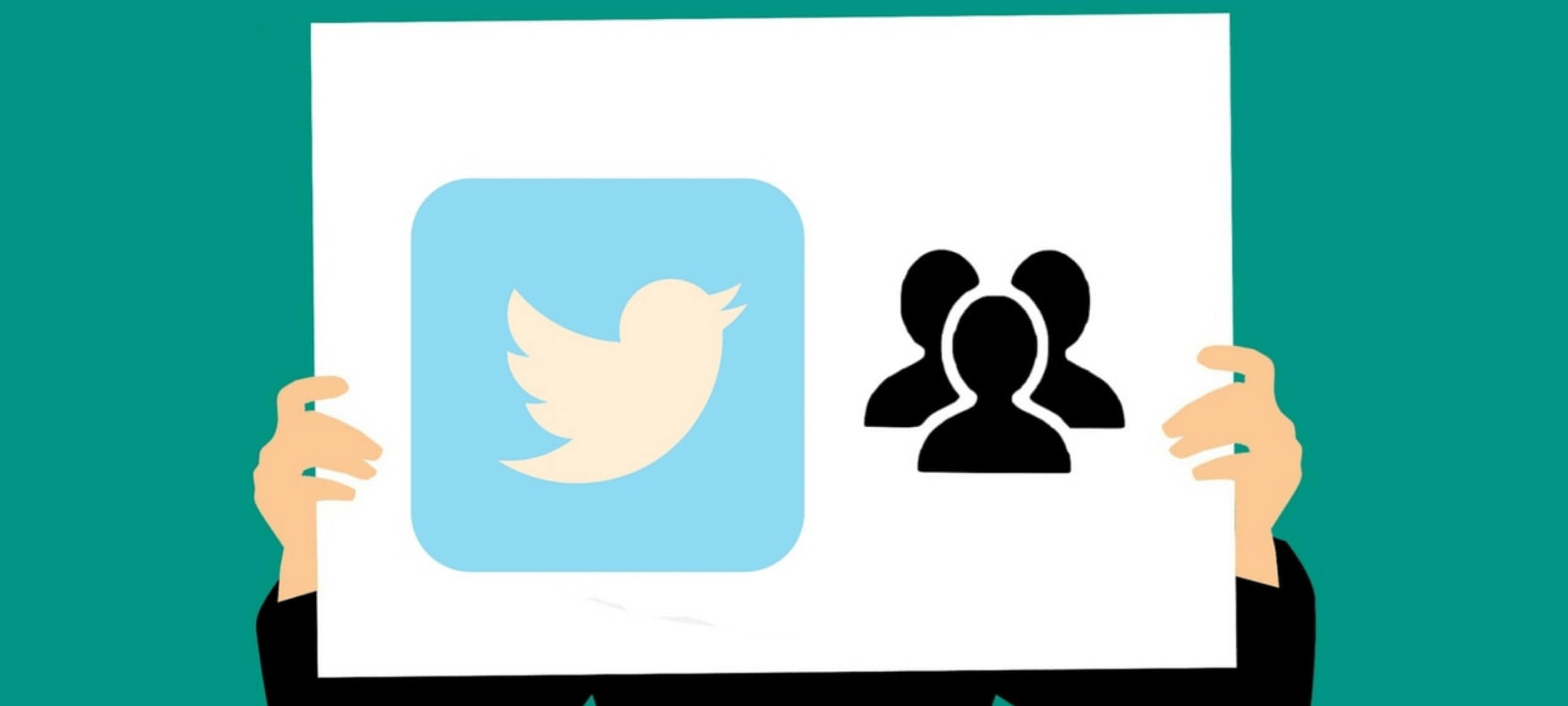
Twitter made me do it!
Opinion + AnalysisHealth + WellbeingScience + Technology
BY Michael Salter The Ethics Centre 5 SEP 2016
In a recent panel discussion, academic and former journalist Emma Jane described what happened when she first included her email address at the end of her newspaper column in the late nineties.
Previously, she’d received ‘hate mail’ in the form of relatively polite and well-written letters but once her email address was public, there was a dramatic escalation in its frequency and severity. Jane coined the term ‘Rapeglish’ to describe the visceral rhetoric of threats, misogyny and sexual violence that characterises much of the online communication directed at women and girls.
Online misogyny and abuse has emerged as a major threat to the free and equal public participation of women in public debate – not just online, but in the media generally. Amanda Collinge, producer of the influential ABC panel show Q&A, revealed earlier this year that high profile women have declined to appear in the program due to “the well-founded fear that the online abuse and harassment they already suffer will increase”.
Twitter’s mechanics mean users have no control over who replies to their tweets and cannot remove abusive or defamatory responses.
Most explanations for online misogyny and prejudice tend to be cultural. We are told that the internet gives expression to or amplifies existing prejudice – showing us the way we always were. But this doesn’t explain why some online platforms have a greater problem with online abuse than others. If the internet were simply a mirror for the woes of society, we could expect to see similar levels of abuse across all online platforms.
The ‘honeypot for assholes’
This isn’t the case. Though it isn’t perfect, Facebook has a relatively low rate of online abuse compared to Twitter, which was recently described as a “honeypot for assholes”. One study found 88 percent of all discriminatory or hateful social media content originates on Twitter.
Twitter’s abuse problem illustrates how culture and technology are inextricably linked. In 2012, Tony Wang, then UK general manager of Twitter, described the organisation as “the free speech wing of the free speech party”. This reflects a libertarian commitment to uncensored information and rampant individualism, which has been a long-standing feature of computing and engineering culture – as revealed in the design and administration of Twitter.
Twitter’s mechanics mean users have no control over who replies to their tweets and cannot remove abusive or defamatory responses, which makes it an inherently combative medium. Users complaining of abuse have found that Twitter’s safety team does not view explicit threats of rape, death or blackmail as a violation of their terms of service.
The naïve notion that Twitter users should battle one another within a ‘marketplace of ideas’ . . . ignores the way sexism, racism and other forms of prejudice force diverse users to withdraw from the public sphere.
Twitter’s design and administration all reinforce the ‘if you can’t take the heat, get out of the kitchen’ machismo of Silicon Valley culture. Social media platforms were designed within a male dominated industry and replicate the assumptions and attitudes typical of men in the industry. Twitter provides users with few options to protect themselves from abuse and there are no effective bystander mechanisms to enable users to protect each other.
Over the years, the now banned Milo Yiannopoulos and now imprisoned ‘revenge porn king’ Hunter Moore have accumulated hundreds of thousands of admiring Twitter followers by orchestrating abuse and hate campaigns. The number of followers, likes and retweets can act like a scoreboard in the ‘game’ of abuse.
Suggesting Twitter should be a land of free speech where users should battle one another within a ‘marketplace of ideas’ might make sense to the white, male, heterosexual tech bro, but it ignores the way sexism, racism and other forms of prejudice force diverse users to withdraw from the public sphere.
Dealing with online abuse
Over the last few years, Twitter has acknowledged its problem with harassment and sought to implement a range of strategies. As Twitter CEO Dick Costolo stated to employees in a leaked internal memo, ‘We suck at dealing with abuse and trolls on the platform and we’ve sucked at it for years’. However, steps have been incremental at best and are yet to make any noticeable difference to users.
How do we challenge the most toxic aspects of internet culture when its norms and values are built into online platforms themselves?
Researchers and academics are calling for the enforcement of existing laws and the enactment of new laws in order to deter online abuse and sanction offenders. ‘Respectful relationships’ education programs are incorporating messages on online abuse in the hope of reducing and preventing it.
These necessary steps to combat sexism, racism and other forms of prejudice in offline society might struggle to reduce online abuse though. The internet is host to specific cultures and sub-cultured in which harassment is normal or even encouraged.
Libertarian machismo was entrenched online by the 1990s when the internet was dominated by young, white, tech-savvy men – some of whom disseminated an often deliberately vulgar and sexist communicative style that discouraged female participation. While social media has bought an influx of women and other users online it has not displaced these older, male-dominated subcultures.
The fact that harassment is so easy on social media is no coincidence. The various dot-com start-ups that produced social media have emerged out of computing cultures that have normalised online abuse for a long time. Indeed, it seems incitements to abuse have been technologically encoded into some platforms.
Designing a more equitable internet
So how do we challenge the most toxic aspects of internet culture when its norms and values are built into online platforms themselves? How can a fairer and more prosocial ethos be built into online infrastructure?
Changing the norms and values common online will require a cultural shift in computing industries and companies.
Earlier this year, software developer and commentator Randi Lee Harper drew up an influential list of design suggestions to ‘put out the Twitter trashfire’ and reduce the prevalence of abuse on the platform. Her list emphasises the need to give users greater control over their content and Twitter experience.
One solution might appear in the form of social media app Yik Yak – basically a local, anonymous version of Twitter but with a number of important built-in safety features. When users post content to Yik Yak, other users can ‘upvote’ or ‘downvote’ the content depending on how they feel about it. Comments that receive more than five ‘down’ votes are automatically deleted, enabling a swift bystander response to abusive content. Yik Yak also employs automatic filters and algorithms as a barrier against the posting of full names and other potentially inappropriate content.
Yik Yak’s platform design is underpinned by a social understanding of online communication. It recognises the potential for harm and attempts to foster healthy bystander practices and cultures. This is a far cry from the unfettered pursuit of individual free speech at all costs, which has allowed abuse and harassment to go unaddressed in the past.
It seems like it will require more than a behavioural shift from users. Changing the norms and values common online will require a cultural shift in computing industries and companies so the development of technology is underpinned by a more diverse and inclusive understanding of communication and users.
Ethics in your inbox.
Get the latest inspiration, intelligence, events & more.
By signing up you agree to our privacy policy
You might be interested in…
Opinion + Analysis
Health + Wellbeing, Relationships
Should you celebrate Christmas if you’re not religious?
Opinion + Analysis
Business + Leadership, Science + Technology
Meet Aubrey Blanche: Shaping the future of responsible leadership
Opinion + Analysis
Health + Wellbeing, Relationships
Male suicide is a global health issue in need of understanding
Big thinker
Science + Technology
Big Thinker: Matthew Liao
BY Michael Salter
Scientia Fellow and Associate Professor of Criminology UNSW. Board of Directors ISSTD. Specialises in complex trauma & organisedabuse.com
BY The Ethics Centre
The Ethics Centre is a not-for-profit organisation developing innovative programs, services and experiences, designed to bring ethics to the centre of professional and personal life.
LGBT...Z? The limits of ‘inclusiveness’ in the alphabet rainbow

LGBT…Z? The limits of ‘inclusiveness’ in the alphabet rainbow
Opinion + AnalysisHealth + WellbeingRelationships
BY Jesse Bering The Ethics Centre 5 SEP 2016
A few years ago on Twitter, I found myself mindlessly clicking on a breadcrumb trail of ‘likes’ linked to a random post. It was under these banal circumstances that I came across a user profile with a brief but purposeful bio, one featuring the mysterious acronym ‘LGBTZ’.
The first four letters were obvious enough to me. LGBT, that bite-sized abbreviation for Lesbian, Gay, Bisexual, Transgender, has become a nearly ubiquitous rallying call for members of these historically marginalised groups and their allies. Even Donald Trump spoke this family friendly shorthand in his convention speech (although his oddly staggered enunciation sounded like he was a nervous pre-schooler tip-toeing through an especially tricky part of the alphabet). Trump also tacked on a “Q” for all those ill-defined “Queers” in the Republican audience. (A far less common iteration of this initialism includes an “I” for “Intersex” and an “A” for “Asexual.”)
But Z? The Twitter user’s profile image was a horse, and other language alluding to the fact he (or she) was an animal lover – and not of the platonic kind – brought that curious Z into sharp, squirm-worthy focus: “Zoophile”.
Perhaps we should take a hard look in the mirror and ask whether excluding Zs and Ps and others from the current tolerance roster isn’t doing to them precisely what was once done to us.
If you’re not familiar with the term, a zoophile is a person who is primarily sexually attracted to animals. The primarily part of that sentence is key. These aren’t just lascivious farmhands shagging goats because they can’t find willing human partners. That’s just plain bestiality.
Rather, these are people who genuinely prefer animals over members of their own species. If you hook a male zoophile’s genitals up to a plethysmograph (an extremely sensitive measure of sexual arousal), these men display stronger erectile responses to, say, images of stallions or Golden Retrievers than they do to naked human models.
I’d written about scientific research into zoophilia, along with other unusual sexualities, in my book Perv, so it wasn’t shocking to learn zoophiles have a social media presence. What’s surprising is this maligned demographic is apparently becoming emboldened enough to pull its Z up to the acronym table.
Paedophiles have started inching their much-loathed “P” in this direction as well, albeit in veiled form with the contemporary label “MAP” (“Minor-Attracted Person”). This is especially true for the so-called virtuous paedophiles, who are seriously committed to refraining from acting on their sexual desires because they realise the harm they’d cause to children. Similarly, many zoophiles consider themselves gentle animal welfare advocates, denouncing “zoosadists” who sexually abuse animals.
In any event, it’s easy to shun the Zs and Ps and all the other unwanted sexual minorities clawing their way up the acceptance ladder, refusing them entry into our embattled LGBT territory, because we don’t want to be associated with “perverts”. We’ve overcome tremendous obstacles to be where we are today. As an American growing up during the homophobic Reagan era, never in a million years did I imagine I’d legally marry another man one day. Yet I did. At this stage, perhaps we should take a hard look in the mirror and ask whether excluding Zs and Ps and others from the current tolerance roster isn’t doing to them precisely what was once done to us.
I know what you’re thinking. There’s a huge difference, since in these sad cases we’re dealing with the most innocent, most vulnerable members of society, who also can’t give their consent. That’s very much true.
When you actually try to justify our elbowing the Zs and Ps and others of their ilk out from under the rainbow umbrella though, it’s not so straightforward. Any seemingly ironclad rationale for their exclusion is stuffed more with blind emotion than clear-sighted reason.
To begin with, one doesn’t have to be sexually active to be a member of a sexual community. After all, I identified as gay before I had gay sex, just as I imagine most heterosexual people identify as straight before losing their virginity. In principle, at least, the same would apply to morally celibate zoophiles and paedophiles, neither of which are criminals and child molesters. Desires and behaviours are two different things.
Secondly, there’s now strong evidence paraphilias (lust outside of the norm) emerge in early childhood or, in the case of paedophilia, may even be innate. One zoophile, a successful attorney, told researchers that while his friends in middle school were all trying to get their hands on their fathers’ Playboys, he was secretly coveting the latest issue of Equus magazine.
Whether Zs or Ps are “born that way” or become that way early in life, it’s certainly not a choice they’ve made. This isn’t difficult to grasp but it tends to elude popular wisdom. I don’t know about you but I couldn’t become aroused by a Clydesdale or a prepubescent child if my life depended on it. That doesn’t make me morally superior to those unlucky enough to have brains that through no fault of their own respond this way to animals and children.
It’s an uncomfortable conversation to have, but there’s no science or logic to why “LGBT” contains the particular letters it does.
Not so long ago, remember, the majority of society saw gay men like me as immoral – even evil. Not for anything they’d done but for the simple fact that, neurologically, they fancied other men rather than women. The courts would have declared me mentally ill, not happily married. Just like conversion therapy has failed miserably to turn gay people straight, paraphilias are also immutable. Every clinical attempt to turn paedophiles into “teleiophiles” (attracted to reproductive-aged adults) has been a major flop.
Who knows what tortuous inner lives all those closeted Zs and Ps – and other unmentionables bearing today’s cross of scorn – experience, despite being celibate. Clinical psychologists report many of their clients are suicidal because of unwanted sexual desires – and this includes teenagers with a dawning awareness they are attracted to younger people.
I think it’s patently hypocritical for the LGBT community – which has worked so hard to overcome negative stereotypes, ostracism, and unjust laws – to shut out these people, fearing they would tarnish us more acceptable deviants. We’re only paying lip service to the concept of inclusiveness when we so publicly distance ourselves from those who need this communal protection the most.
In fact, LGB people arguably share more in common with the Zs and Ps than they do the Ts, since being transgender isn’t about who (or what) you’re sexually attracted to, but the gender you identify with. Unlike those representing the other letters in this character soup, trans people say their sexuality plays no role at all. Why then are Ts included while other, more unspeakable, sexual minorities aren’t?
Here’s my point then. It’s an uncomfortable conversation to have but there’s no science or logic to why “LGBT” contains the particular letters it does. Instead, it’s an evolving social code. So, is the filter that shapes this code just another moralistic lens that casts some human beings as inherently inferior and worthier of shame than others? And if this is so, who gets to control this filter and why?
Ethics in your inbox.
Get the latest inspiration, intelligence, events & more.
By signing up you agree to our privacy policy
You might be interested in…
Opinion + Analysis
Relationships
Want men to stop hitting women? Stop talking about “real men”
Opinion + Analysis
Politics + Human Rights, Relationships
Adoption without parental consent: kidnapping or putting children first?
Opinion + Analysis
Health + Wellbeing, Relationships
Should parents tell kids the truth about Santa?
LISTEN
Health + Wellbeing, Business + Leadership, Society + Culture
Life and Shares
BY Jesse Bering
Jesse Bering is a research psychologist and Director of the Centre for Science Communication at the University of Otago in Dunedin, New Zealand. An award-winning science writer specializing in human behaviour, his first book, The Belief Instinct (2011), was included on the American Library Association’s Top 25 Books of the Year.
BY The Ethics Centre
The Ethics Centre is a not-for-profit organisation developing innovative programs, services and experiences, designed to bring ethics to the centre of professional and personal life.
5 dangerous ideas: Talking dirty politics, disruptive behaviour and death

5 dangerous ideas: Talking dirty politics, disruptive behaviour and death
Opinion + AnalysisBusiness + LeadershipScience + Technology
BY The Ethics Centre 1 SEP 2016
The Ethics Centre was the founding partner of the Festival of Dangerous Ideas back in 2009. We’re thrilled that the festival continues with a program full of world-leading thinkers.
Here are five ideas that were pondered, dissected and debated over the big weekend in 2016. We talked dirty politics, disruptive behaviour, disappearing countries and death.
-
Dirty politics
In 2016, the festival put dirty old politics in the spotlight. Australia’s federal parliament had just resumed session with a bunch of independent and minority party representatives, the United States was still trying to make sense of Donald Trump and across the globe nations were trying to unpack exactly what ‘extremism’ was and how to deal with it.
“If our goal is to seek a deeper understanding of the world, our lack of moral diversity is going to make it harder.”
American psychologist Jonathan Haidt’s TED talk explores the moral values underpinning liberals and conservatives. Instead of looking at politics as a battleground of ‘right vs wrong’, Haidt encourages us to see political differences as being based in different moral values.
-
Disruptive behaviour
You can’t make an omelette without breaking a few eggs, right? For the disruptors of the world, improvement comes at a price – we need to break eggs, challenge convention, and occasionally hurt people’s feelings.
On the other side of the Pacific, the #BlackLivesMatter movement was upsetting middle-class, white Americans in 2016 by calling attention to continued racial disparities in the US.
Check out philosopher George Yancy’s open letter, ‘Dear White America’ to learn about the intellectual basis for the movement. In the letter, Yancy makes a simple but confronting point to his white American fellows – if you’re white, no matter how well intentioned you are, you’re probably racist. He wrote:
“If you are white, and you are reading this letter, I ask that you don’t run to seek shelter from your own racism. Don’t hide from your responsibility. Rather, begin, right now, to practice being vulnerable. Being neither a ‘good’ white person nor a liberal white person will get you off the proverbial hook.”
Yancy’s essay prompted exactly the response he expected – anger. So much so the American Philosophical Association issued a letter of support. You can read Yancy’s thoughts on the backlash he copped here.
Australians reading or hearing about the Black Lives Matter movement might also want to read into the history of Aboriginal deaths in custody.
-
Disappearing conflicts
Conflict, politics and geography drive some nations and communities to the brink while others flourish. What are the unseen consequences of major global trends?
The Right to be Cold asks whether the world’s failure to address climate change is a human rights violation against Inuit peoples whose way of life is being eradicated along with the melting ice.
To get a sense of what’s going on for these remote communities, check out photographer Ciril Jazbec’s series documenting climate change and its impact on Greenlanders.
“It was April and the ice was starting to melt, which was highly unusual. Usually the ice would stay out until June.”
-
Dealing in death
If evolution hardwires in us the drive to survive, how is it humans are able to overcome their biological imperative and take their own lives? There’s still a stigma that suicide is a ‘selfish choice’, but evolutionary biologist Jesse Bering explores the science behind suicide.
“Human suicide is an adaptive behavioural strategy that becomes increasingly likely to occur whenever there is a perfect storm of social, ecological, developmental and biological variables factoring into the evolutionary equation.”
For the scientifically minded, Bering’s essay in Scientific American is a must-read. If you’ve never donned a white lab coat, you might be more inclined to listen to the Freakonomics podcast ‘The Suicide Paradox’.
-
Dangerous ideas
While every Festival of Dangerous Ideas has specific themes, the main goal has always been to create a safe space for open discussion of ideas some people would consider dangerous.
It’s a skill that seems to be in growing demand, so before you listen, read, think or tweet, check out what festival co-founder Simon Longstaff writes on why conversations matter.
Ethics in your inbox.
Get the latest inspiration, intelligence, events & more.
By signing up you agree to our privacy policy
You might be interested in…
Opinion + Analysis
Business + Leadership
The near and far enemies of organisational culture
Opinion + Analysis
Science + Technology, Relationships
Love and the machine
Opinion + Analysis
Health + Wellbeing, Relationships, Science + Technology
How to put a price on a life – explaining Quality-Adjusted Life Years (QALY)
Opinion + Analysis
Relationships, Science + Technology
Big tech’s Trojan Horse to win your trust
BY The Ethics Centre
The Ethics Centre is a not-for-profit organisation developing innovative programs, services and experiences, designed to bring ethics to the centre of professional and personal life.
Ethics Explainer: Social Contract

Social contract theories see the relationship of power between state and citizen as a consensual exchange. It is legitimate only if given freely to the state by its citizens and explains why the state has duties to its citizens and vice versa.
Although the idea of a social contract goes as far back as Epicurus and Socrates, it gained popularity during The Enlightenment thanks to Thomas Hobbes, John Locke and Jean-Jacques Rousseau. Today the most popular example of social contract theory comes from John Rawls.
The social contract begins with the idea of a state of nature – the way human beings would exist in the world if they weren’t part of a society. Philosopher Thomas Hobbes believed that because people are fundamentally selfish, life in the state of nature would be “nasty, brutish and short”. The powerful would impose their will on the weak and nobody could feel certain their natural rights to life and freedom would be respected.
Hobbes believed no person in the state of nature was so strong they could be free from fear of another person and no person was so weak they could not present a threat. Because of this, he suggested it would make sense for everyone to submit to a common set of rules and surrender some of their rights to create an all-powerful state that could guarantee and protect every person’s right. Hobbes called it the ‘Leviathan’.
It’s called a contract because it involves an exchange of services. Citizens surrender some of their personal power and liberty. In return the state provides security and the guarantee that civil liberty will be protected.
Crucially, social contract theorists insist the entire legitimacy of a government is based in the reciprocal social contract. They are legitimate because they are the only ones the people willingly hand power to. Locke called this popular sovereignty.
Unlike Hobbes, Locke thought the focus on consent and individual rights meant if a group of people didn’t agree with significant decisions of a ruling government then they should be allowed to join together to form a different social contract and create a different government.
Not every social contract theorist agrees on this point. Philosophers have different ideas on whether the social contract is real, or if it’s a fictional way to describe the relationship between citizens and their government.
If the social contract is a real contract – just like your employment contract – people could be free not to accept the terms. If a person didn’t agree they should give some of their income to the state they should be able to decline to pay tax and as a result, opt out of state-funded hospitals, education, and all the rest.
Like other contracts, withdrawing comes with penalties – so citizens who decide to stop paying taxes may still be subject to punishment.
Other problems arise when the social contract is looked at through a feminist perspective. Historically, social contract theories, like the ones proposed by Hobbes and Locke, say that (legitimate) state authority comes from the consent of free and equal citizens.
Philosophers like Carole Pateman challenge this idea by noting that it fails to deal with the foundation of male domination that these theories rest on.
For Pateman the myth of autonomous, free and equal individual citizens is just that: a myth. It obscures the reality of the systemic subordination of women and others.
In Pateman’s words the social contract is first and foremost a ‘sexual contract’ that keeps women in a subordinate role. The structural subordination of women that props up the classic social contract theory is inherently unjust.
The inherent injustice of social contract theory is further highlighted by those critics that believe individual citizens are forced to opt in to the social contract. Instead of being given a choice, they are just lumped together in a political system which they, as individuals, have little chance to control.
Of course, the idea of individuals choosing not to opt in or out is pretty impractical – imagine trying to stop someone from using roads or footpaths because they didn’t pay tax.
To address the inherent inequity in some forms of social contract theory, John Rawls proposes a hypothetical social contract based on fundamental principles of justice. The principles are designed to provide a clear rationale to guide people in choosing to willingly agree to surrender some individual freedoms in exchange for having some rights protected. Rawls’ answer to this question is a thought experiment he calls the veil of ignorance.
By imagining we are behind a veil of ignorance with no knowledge of our own personal circumstances, we can better judge what is fair for all. If we do so with a principle in place that would strive for liberty for all at no one else’s expense, along with a principle of difference (the difference principle) that guarantees equal opportunity for all, as a society we would have a more just foundation for individuals to agree to a contract that in which some liberties would be willingly foregone.
Out of Rawls’ focus on fairness within social contract theory comes more feminist approaches, like that of Jean Hampton. In addition to criticising Hobbes’ theory, Hampton offers another feminist perspective that focuses on extending the effects of the social contract to interpersonal relationships.
In established states, it can be easy to forget the social contract involves the provision of protection in exchange for us surrendering some freedoms. People can grow accustomed to having their rights protected and forget about the liberty they are required to surrender in exchange.
Whether you think the contract is real or just a useful metaphor, social contract theory offers many unique insights into the way citizens interact with government and each other.
Ethics in your inbox.
Get the latest inspiration, intelligence, events & more.
By signing up you agree to our privacy policy
You might be interested in…
Opinion + Analysis
Politics + Human Rights
How we should treat refugees
Opinion + Analysis
Society + Culture, Politics + Human Rights
‘The Zone of Interest’ and the lengths we’ll go to ignore evil
Opinion + Analysis
Politics + Human Rights
Why compulsory voting undermines democracy
WATCH
Politics + Human Rights
James C. Hathaway on the refugee convention
BY The Ethics Centre
The Ethics Centre is a not-for-profit organisation developing innovative programs, services and experiences, designed to bring ethics to the centre of professional and personal life.
Why hard conversations matter

Why hard conversations matter
Opinion + AnalysisRelationships
BY Simon Longstaff The Ethics Centre 31 AUG 2016
There are times in the history of a nation when its character is tested and defined. Too often it happens with war, natural disasters or economic collapse. Then the shouting gets our attention.
But there are also our quieter moments – the ones that reveal solid truths about who we are and what we stand for.
How should we recognise Indigenous Australians? Can our economy be repaired in a manner that is even-handed? How will we choose if forced to decide between China and the United States? How do we create safe ways for people seeking asylum? Can we grow our economy and protect our people and environments? These are just some of the questions we face.
Too often, I see conversations shut down before they have even begun. People with a contrary point of view are faced with outrage, shouted down or silenced by others driven by the certainty of righteous indignation.
And here’s another question. Do we have the capacity to talk about these things without tearing ourselves and each other apart?
There are some safe places for open conversation about difficult questions. Thirty years ago I began work at a not-for-profit, The Ethics Centre dedicated to creating them. The Festival of Dangerous Ideas now enters its 11th year with a new digital format to cater to our current times, bringing leading thinkers from around the world together to discuss important issues.
Sadly, there is a growing fragility across Australian society. The demand for ideological purity (you’re completely ‘with us’ or ‘against us’) puts us at risk of a fractured and stuffy world of absolutes.
Too often, I see conversations shut down before they have even begun. People with a contrary point of view are faced with outrage, shouted down or silenced by others driven by the certainty of righteous indignation. In such a world, there is no nuance, no seeking to understand the grey areas or subtleties of argument.
Attempts to prove to people that they are wrong just leads to stalemate. Barricades go up and each side lobs verbal grenades. There is another way.
This phenomenon crosses the political spectrum – embracing conservatives and progressives alike. In my opinion, it is the product of a self-fulfilling fear that our society’s ethical skin is too thin to survive the prick of controversy and debate. This is a poisonous belief that drains the life from a liberal democracy.
Fortunately, the antidote is easily at hand. In essence we need to spend less time trying to change other people’s minds and more time trying to understand their point of view. We do that by taking them entirely seriously.
Why make this change? Because attempts to prove to people that they are wrong just leads to stalemate. Barricades go up and each side lobs verbal grenades. There is another way. We could allow people to work out what the boundaries are for their own beliefs.
Working out the lines we cannot cross is often the first step towards others, but it can only happen when people feel safe. Giving people the space to fall on just the right side of such lines can make a world of difference.
So I wonder, might we pause for a moment, climb down from our battle stations and call a ceasefire in the wars of ideas? Might we recognise the person on the other side of an issue may not be unprincipled? Perhaps they’re just differently principled.
Can we see in the face of our ideological opponent another person of goodwill? What then might we discover about each other; what unites and, yes, what divides? What then might we understand about the issues that will define us as a people?
Let’s rediscover the art of difficult discussions in which success is measured in the combination of passion and respect. Let’s banish the bullies – even those who claim to be well-intentioned. They, alone, have no place in the conversations we now need to have.
Ethics in your inbox.
Get the latest inspiration, intelligence, events & more.
By signing up you agree to our privacy policy
You might be interested in…
Opinion + Analysis
Politics + Human Rights, Relationships, Society + Culture
Stop giving air to bullies for clicks
Opinion + Analysis
Relationships
Can we celebrate Anzac Day without glorifying war?
Explainer
Politics + Human Rights, Relationships
Ethics Explainer: Autonomy
Opinion + Analysis
Relationships





